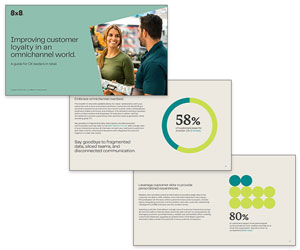As we move through 2023, it’s become increasingly essential for businesses to understand the key performance indicators that help them measure their organization’s growth and success.
NPS (Net Promoter Score) Benchmarks are crucial to this process, providing invaluable insight into how customers feel about a product or service. This is because they provide organizations a vital edge in staying ahead of the competition.
To stay on top of the latest industry trends and benchmarks, leading enterprises need to know what the net promoter score benchmarks they should aim for to achieve maximum customer satisfaction.
This post will help you understand what NPS is and how it affects your business. We’ll also look at the latest NPS benchmarks across leading industries—showing you how your business measures up against others within your sector.
What’s NPS?
Net Promoter Score is a customer satisfaction metric developed by Fred Reichheld and Bain & company. It’s based on a simple question: “On a scale of 0 to 10, how likely are you to recommend our company/product/service to a friend or colleague?”
Respondents are then classified into three groups based on their rating:
- Promoters (score 9-10): These customers are highly satisfied and loyal. They are more likely to refer others to your business, contributing to positive word-of-mouth and organic growth.
- Passives (score 7-8): Passives are moderately satisfied customers who may not actively promote your business but are less likely to speak negatively about it. While competitors may continue using your products or services, they can easily sway them.
- Detractors (score 0-6): Detractors are dissatisfied customers who risk leaving and may even spread negative feedback about your business. Their dissatisfaction poses a potential threat to customer retention and growth.
To calculate NPS, subtract the percentage of detractors from the percentage of promoters. The resulting score can range from -100 to +100, where a higher score indicates a greater proportion of promoters than detractors.
How NPS Helps Measure Customer Loyalty
NPS serves as a reliable indicator of customer loyalty and advocacy. Happy customers with a good net promoter score tend to become brand advocates, fueling growth through positive referrals. Conversely, unhappy customers can harm your business, leading to churn and a decline in your customer base.
By evaluating NPS, businesses gain incredibly valuable insights into consumer sentiment throughout the customer journey.
NPS surveys at various touchpoints capture real-time feedback and enable companies to identify strengths and weaknesses at specific stages. This knowledge empowers organizations to prioritize areas for improvement, enhancing the overall customer experience and fostering loyalty.
Benefits of NPS as a Performance Metric
1. Clear and Actionable
NPS provides a straightforward metric that is easy to understand and act upon. It offers a holistic view of customer sentiment and helps companies identify the drivers behind their scores, allowing for targeted improvements.
2. Predictive Power
NPS has demonstrated its predictive power in relation to customer retention and growth. Studies have shown a strong correlation between higher NPS scores and increased customer retention rates.
By consistently monitoring this metric, businesses can proactively address issues, reduce churn, and cultivate a loyal customer base.
3. Customer-Focused Improvement
NPS helps businesses shift their focus to customer needs and expectations. Companies can identify pain points, address shortcomings, and enhance their offerings by collecting and analyzing customer feedback. This customer-centric approach leads to higher satisfaction levels and improved business performance.
4. Competitive Advantage
Benchmarking NPS against industry standards provides valuable insights into where your organization stands.
By comparing your NPS to the average in your industry, you can identify your strengths and weaknesses relative to competitors. This knowledge empowers you to differentiate your business and strive for industry-leading customer loyalty.
NPS Benchmarks
NPS benchmarks refer to the average net promoter scores observed within specific industries. These benchmarks serve as reference points, providing valuable insights into the relative performance of companies within a particular sector.
Benchmarking your NPS results against industry NPS benchmarks allows you to understand where you stand and strive for a higher score.
Importance of Comparing NPS Against Benchmarks
Comparing your NPS against industry benchmarks is essential for several reasons:
1. Contextual Assessment
Industry benchmarks provide context for your NPS score, allowing you to understand how you fare compared to your competitors.
This assessment is particularly valuable, as it helps you gauge whether your customer loyalty efforts are on par with or surpassing industry standards.
2. Identifying Areas for Improvement
Benchmarking your NPS score against industry averages reveals potential gaps in your customer experience efforts.
If your NPS falls below the average NPS score in your industry, it indicates areas that require attention and improvement. Conversely, if your NPS is higher than the average, it showcases your success in cultivating customer loyalty.
3. Setting Goals and Targets
Industry benchmarks help you set realistic goals and targets for your NPS improvement initiatives. By aiming to exceed the average NPS score in your sector, you establish a clear objective and motivate your team to enhance the customer experience, ultimately leading to increased customer loyalty and business growth.
Factors Influencing Industry-Specific Benchmarks
Several factors influence industry-specific NPS benchmarks, including:
Customer Expectations
Different industries have varying customer expectations based on their unique requirements and the nature of their products or services.
For example, industries such as internet service providers or credit cards may face different challenges in delivering excellent customer experiences compared to those in the SaaS industry. Understanding these expectations helps shape industry benchmarks.
Customer Journey and Touchpoints
The customer journey varies across industries, with different touchpoints and interactions. Industries with longer and more complex customer journeys may have different NPS benchmarks than those with simpler purchase processes. Examining industry-specific customer journeys helps determine appropriate NPS benchmarks.
Industry-Specific Metrics
Each industry has its metrics and standards for measuring customer loyalty and satisfaction. These metrics can influence NPS benchmarks within the industry.
For instance, the healthcare industry may prioritize patient outcomes and satisfaction, while the e-commerce sector may focus on delivery speed and customer support responsiveness.
Industry-Specific Challenges
Every industry faces unique challenges that impact customer loyalty and NPS scores. Regulatory requirements, pricing structures, competitive landscapes, and product/service complexity can influence NPS benchmarks. Understanding these challenges allows for a more accurate comparison of NPS scores within the industry.
By considering these factors, businesses can comprehensively understand industry benchmarks and align their customer loyalty strategies accordingly.
Key NPS Benchmarks for Leading Industries in 2023
Understanding the NPS benchmarks within specific industries is essential for businesses assessing customer loyalty and satisfaction levels.
Here, we will explore the key NPS benchmarks for leading industries in 2023, providing valuable insights into the average NPS scores observed and highlighting examples of companies within each sector.
We have used Retently’s 2023 NPS Benchmark report to determine the NPS benchmarks for different industries.
Retail and E-commerce
The retail and e-commerce industry is highly competitive, with customer satisfaction playing a pivotal role in success.
According to Retently’s 2023 NPS Benchmark report, the average NPS for retailers and e-commerce is 61 and 50, respectively. Some leading companies with exceptional NPS scores include:
- Apple: Apple consistently achieves a high NPS score thanks to its focus on customer experience and product quality. Their commitment to innovative, user-friendly devices contributes to customer loyalty and advocacy.
- Amazon: Amazon is renowned for its customer-centric approach, reflected in its high NPS score. Amazon has established a loyal customer base by delivering excellent service, fast shipping, and a wide range of products.
Financial Services
The financial services sector, which encompasses banks, insurance companies, and credit card providers, is driven by customer trust and satisfaction. The average NPS in financial services or banking institutions is 71. Notable companies with strong NPS scores include:
- Chase: a prominent financial institution, Chase consistently receives a good NPS score. Their focus on personalized customer service, competitive offerings, and digital banking solutions contributes to customer satisfaction and loyalty.
- American Express: American Express has earned a reputation for its customer-centric approach, providing tailored financial solutions and exceptional service. Their efforts result in a higher NPS score compared to industry averages.
Technology and Software
The technology and software industry thrives on innovation and customer success. With a wide range of products and services, the average NPS in the software and SaaS industry is around 41. Noteworthy companies with strong NPS scores include:
- Microsoft: Microsoft’s commitment to customer feedback and continuous improvement has contributed to a good NPS score. Their focus on providing user-friendly software solutions and addressing customer needs enhances customer satisfaction and loyalty.
- Salesforce: As a leader in customer relationship management (CRM) software, Salesforce prioritizes customer success. Their real-time support, regular product updates, and focus on customization all contribute to a higher NPS score than industry benchmarks.
Healthcare and Pharmaceutical
The healthcare and pharmaceutical industry places a premium on patient care and satisfaction. The average NPS in this sector is typically 45 due to regulatory constraints and complex customer journeys. Notable companies with impressive NPS scores include:
- Mayo Clinic: The Mayo Clinic is recognized for its patient-centered approach and commitment to delivering high-quality healthcare services. Their emphasis on personalized care and comprehensive medical solutions contributes to a good NPS score.
- Pfizer: Pfizer, a leading pharmaceutical company, strives to improve patient outcomes and satisfaction. Their focus on research, development, and addressing patient needs has resulted in a higher NPS score compared to industry averages.
By analyzing the NPS scores of these leading companies within their respective industries, businesses can gain valuable insights and benchmarks to assess their performance.
It is important to note that NPS scores can vary depending on factors such as the customer base, industry dynamics, and external circumstances, including the impact of the pandemic.
This blog post has been re-published by kind permission of 8x8 – View the Original Article
For more information about 8x8 - visit the 8x8 Website
Call Centre Helper is not responsible for the content of these guest blog posts. The opinions expressed in this article are those of the author, and do not necessarily reflect those of Call Centre Helper.
Author: 8x8
Published On: 12th Sep 2023 - Last modified: 9th Dec 2024
Read more about - Guest Blogs, 8x8






 8x8 is transforming the future of business communications as a leading Software-as-a-Service provider of voice, video, chat, contact centre, and enterprise-class API solutions, powered by one global cloud communications platform.
8x8 is transforming the future of business communications as a leading Software-as-a-Service provider of voice, video, chat, contact centre, and enterprise-class API solutions, powered by one global cloud communications platform. 































